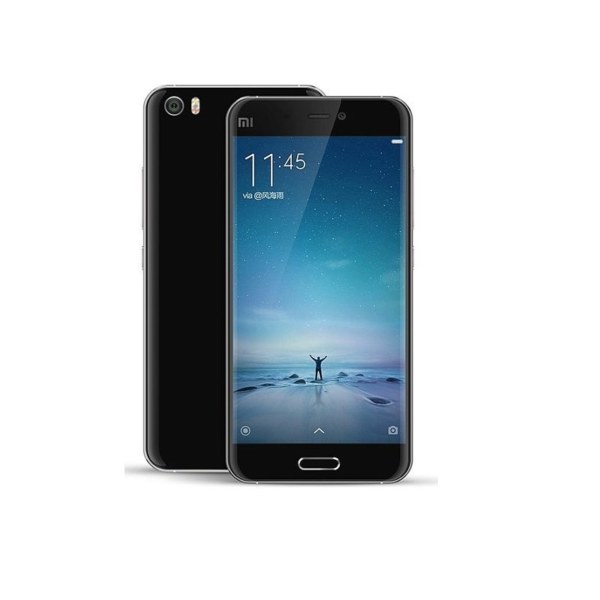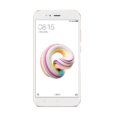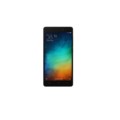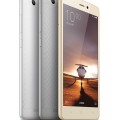- Home
- List of devices
- Xiaomi
- Xiaomi Mi 5
Xiaomi Mi 5


-
CPU:
-
RAM:
-
Storage:
-
Display:
-
Camera:
-
OS:
Specs
General
| Announced | 24 February, 2016 |
| Released | 01 March, 2016 |
| Status | Coming Soon |
Display
| Display Type <strong>Display Technology => </strong> A number of display technologies and types used in mobile phones => TFT (Thin Film Transistor), IPS (In-Place Switching), OLED (Organic Light Emitting Diode), AMOLED (Active-Matrix Organic Light-Emitting Diode), Super AMOLED (an even advanced version of AMOLED), Resistive Touchscreen (Resistive touchscreens contain two layer of conductive material with a very small gap between them which acts as a resistance), Capacitive Touchsceen (Capacitive touchscreen technology consists of a layer of glass coated with a transparent conductor) | IPS LCD |
| Size | 5.15 |
| Resolution | 1080 x 1920 |
| Pixel Density <strong>Pixel Density (PPI)</strong> is refers to the concentration of pixels on a particular display, measured in pixels per inch (ppi). Pixel density is calculated by dividing the diagonal pixel resolution of a display by its diagonal size, higher pixel density better display quality. | 440 ppi |
| Features | 600 nit brightness |
Hardware
| Chipset <strong>Chipset</strong> is a group of integrated circuits designed to perform one or a more dedicated functions, often with real time computing constraints, Popular smartphones are equipped with more advanced embedded chipsets that can do many different tasks depending on their programming. | Qualcomm Snapdragon™ 820 |
| CPU <strong>CPU</strong> (Central Processing Unit) mostly known as processors, CPU processes instructions in order to carry out certain functions that make your device operate properly. Processors are often described as the brain of computers, smartphones and tablets, Smartphones and tablets rely on processors to carry out their every task, Processors are an incredibly important factor in selecting any type of computing device, including your smartphone. | 64-bit Kryo |
| GPU <strong>GPU</strong> (Graphics Processing Unit) is a single-chip processor designed to rapidly manipulate and alter memory to accelerate the creation of images in a frame buffer intended for output to a display, This includes things such as lighting effects, object transformations, and 3D motion. | Adreno 530 |
| RAM (Memory) <strong>RAM</strong> (Random Access Memory) is a type of computer memory that can be accessed randomly, any byte of memory can be accessed without touching the preceding bytes that allows information to be stored and accessed quickly from random locations. RAM is the most common type of memory found in computer systems, smartphones, tablets and other electronic devices. | 3GB/4GB |
| Internal Storage <strong>Internal Storage</strong> is a data storage space (flash memory) mostly used in smartphones, tablets and other electronic devices where operating system, apps, music, photos, videos, files and other user data Is stored. | 32GB/64GB/128GB |
| Card Slot <strong>Memory Card Slot</strong> is a special slot for inserting a memory card. Memory cards allow you to expand the phone's built-in memory, A memory card (sometimes called a flash memory card or a storage card) is a small storage medium used to store data such as text, pictures, audio, and video, for use on small, portable or remote computing devices such as mobile phones, mp3 players, digital cameras. | No |
| Sensors <strong>Sensors</strong> are electronic components that detects and responds to some type of input from the physical environment. The specific input could be light, heat, motion, moisture, pressure and location, The output is generally a signal that is converted to use in computing systems, a location sensor, such as a GPS receiver is able to detect current location of your electronic device. | Fingerprint reader, Compass, battery sensor, light sensor, gyroscope, hall sensor, proximity |
Battery
| Battery Type <strong>Battery Type => </strong> Cell phones run on various kinds of batteries depending on the manufacturer, phone size or shape and features. There are basically four types of cell phone batteries => Lithium Polymer, Lithium Ion, Nickel Metal Hydride and Nickel Cadmium. | Li-Ion (Lithium Ion) |
| Capacity <strong>Battery Capacity</strong> is a measure (typically in Amp-hr) of the charge stored by the battery, and is determined by the mass of active material contained in the battery. The battery capacity represents the maximum amount of energy that can be extracted from the battery under certain conditions. | 3000mAh |
| Fast Charging | Yes, QuickCharge 3.0 |
Camera
| Primary <strong>Camera</strong> is able to capture photographs and usually videos, The most important characteristics of a camera are the resolution (measured in megapixels), lens focus type (fixed or automatic), higher megapixel cameras are known to capture higher quality photos, but not always a good measurement of the photos quality. | 16mp |
| Camera Features |
Sony IMX298 sensor 6-element lens Supports manual mode, real-time HDR, Torch Phase Detect Autofocus Sapphire glass protection 4-axis Optical Image Stabilization |
| Secondary | 4mp |
| Video | up to 4K resolution |
| Flash <strong>Flash Light => </strong> There is commonly two types of flash lights are used in camera mobile phones, LED Flash (LED flash offers lower power consumption with drive circuitry that takes up very little room, LEDs can be strobed faster than any other light source), Xenon Flash (xenon flash produces an extremely intense full-spectrum white light for a very short duration) | Dual LED |
Design
| Type <strong>Design Type</strong> called form factor refers to a mobile phone's size, shape, and style as well as the layout and position of major components of phone. There are three major form factors seen in mobile phones => bar phones, folding phones and sliding phones. | Bar |
| Dimensions | 144.44 x 69.20 x 7.25 mm |
| Weight | 129 grams |
| Protection |
3D Ceramic build Optional 3D glass back Metal frame |
| Colors | Black, White, Gold |
Network
| SIM <strong>SIM</strong> (Subscriber Identity Module) is a small card that contains mobile network subscriber's account information. This allows the phone using the card to attach to a mobile network. The SIM card is most commonly associated with GSM and UMTS mobile networks. Moving a SIM card from one phone to another allows a subscriber to switch mobile phones without having to contact their mobile network carrier. SIM cards can also be used by a phone to store limited amounts of data, such as phone numbers and text messages. | Micro SIM |
| Dual SIM | Yes |
| 2G Network | 850 / 900 / 1800 / 1900MHz |
| 3G Network |
TD-SCDMA : 1900 / 2000MHz WCDMA : 850 / 900 / 1900 / 2100MHz |
| 4G Network |
FDD-LTE : B3 / B7 TD-LTE : B38 / B39 / B40 / B41 |
Software
| Operating System <strong>OS => </strong> Every computer system run on a base software called Operating System (OS). Operating System controls all basic operations of the computer (such as smartphone, PDAs, tablet computers and other handheld devices). The Operating System allows the user to install and run third party applications (apps), apps are used to add new functionality to the device. | Android 6.0 Marshmallow |
| User Interface <strong>UI</strong> or user interface of a device is the look and feel of the on-screen menu system. How it works, its color scheme, how it responds to button presses, all of these things are part of the user interface. | MIUI 7 |
Connectivity
| Bluetooth <strong>Bluetooth</strong> is a wireless communications technology for exchanging data between mobile phones, headsets, computers and other network devices over short distances without wires, Bluetooth technology was primarily designed to support simple wireless networking of personal consumer devices. | v4.1, HID |
| Infrared <strong>Infrared</strong> connectivity is an old wireless technology used to connect two electronic devices. It uses a beam of infrared light to transmit information and so requires direct line of sight and operates only at close range. | |
| Wi-fi <strong>Wi-Fi</strong> is a popular wireless networking technology using radio waves to provide high-speed network connections that allows devices to communicate without cords or cables, Wi-Fi is increasingly becoming the preferred mode of internet connectivity all over the world. | 802.11 b/g/n/ac |
| USB | 2.0 |
| GPS <strong>GPS</strong> The Global Positioning System is a satellite-based radio navigation system, GPS permits users to determine their position, velocity and the time 24 hours a day, in all weather, anywhere in the world, In order to locate your position, your device or GPS receiver must have a clear view of the sky. | Yes |
| NFC <strong>NFC</strong> (Near field communication) is a set of standards for smartphones and similar devices to establish peer-to-peer radio communications with each other by touching them together or bringing them into proximity, usually no more than a few inches. |
Benchmarks
Reviews
-
Great flagship with OK night-time shots.
I've been a user of Mi 4i since Octiber 2014. In October 2015, I decided to upgrade to MI 5 after watching various reviews. The price was very tempting for a Snapdragon so I went ahead and bought it. After using it for almost 5 months here are my analysis,
Design
This is one the most beautifully designed phones to come out in 2016. The metal and glass are blended beautifully. The front of the phone looks great but I wish that it had none of that MI logo in the top left corner. The rear of the phone is great too. But it is very slippery. A cover or a skin is strongly recommended.
Screen
The screen is pretty good. The colours are great and the brightness is very good. You can easily view the text in the daytime too. Though I wish that it had AMOLED instead of the LCD, but that would've increased the price of the phone.Performance
The performance of the phone is very good. I'd say that it is almost on par with the high-end flagships. I have around 20 recent apps in loaded in the memory all the time and the phone performs superbly. Never faced any problems with games like NFS, Hitman etc. But the MIUI's aggressive RAM management is a let down. For e.g. no matter what I do, it won't let me have more than 20 apps in the recent list, even though the phone clearly shows that there is around 600-700 MB of RAM left free.
Software
For someone who loves stock Android, this phone will dissappoint you a lot. MIUI is very iOS like. But there are some great features like dual-apps etc. I won't go into the review of MIUI as there are plenty of reviews on the internet. If you're a fan of stock android, then you can also flash LineageOS (currently in nightly) on it.
Camera
The camera!! Oh what should I say about that day-time shots. They are great. It has a great HDR mode and superb shots. The auto-focus is great too. The 4-axis OIS is awesome as I witnessed while recording the videos and while taking some shots in the manual mode. But the night-time shots are not good as compared to other flagships. This is not the fault of the camera module. It can be attributed to the poor algorithms of the night-time shots. MI devs should work on it.
Overall
A great phone with OK night-time shots.
-
xiaomi Mi5
Great phone with affordable price.



